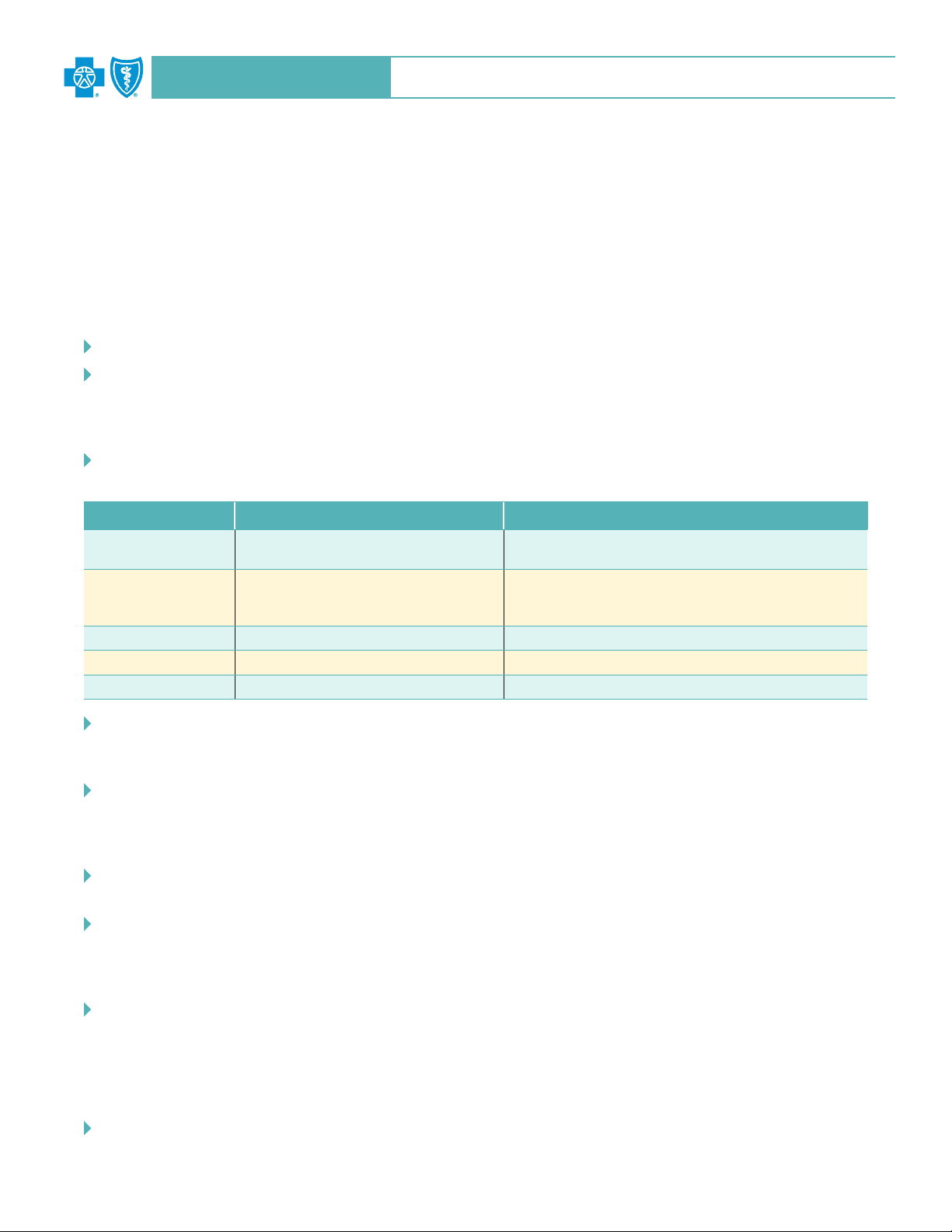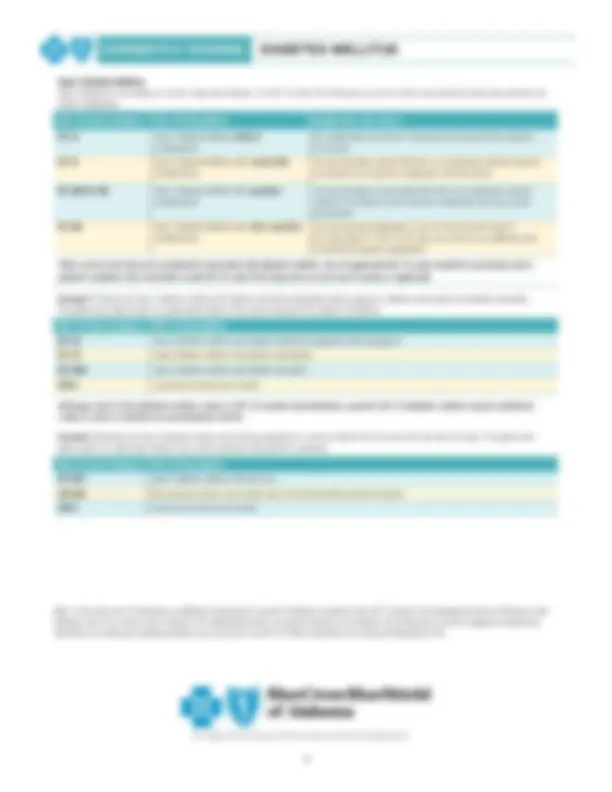



Study with the several resources on Docsity

Earn points by helping other students or get them with a premium plan


Prepare for your exams
Study with the several resources on Docsity

Earn points to download
Earn points by helping other students or get them with a premium plan
Community
Ask the community for help and clear up your study doubts
Discover the best universities in your country according to Docsity users
Free resources
Download our free guides on studying techniques, anxiety management strategies, and thesis advice from Docsity tutors
The prevalence of diabetes mellitus and the complexity of diabetes coding require a solid understanding of the ICD-10 coding guidelines to ensure accurate code ...
Typology: Study notes
1 / 3

This page cannot be seen from the preview
Don't miss anything!


ICD-10 Category E11* Diabetes Mellitus: Tips on How to Code using ICD-10 Codes
E08* Diabetes mellitus due to underlying condition Code first the underlying condition Use additional code to identify any insulin use E09* Drug or chemical induced diabetes mellitus Code first poisoning due to drug or toxin, if applicable Use additional code for adverse effect, if applicable, to identify drug Use additional code to identify any insulin use E10* Type 1 diabetes mellitus No additional code needed to identify insulin use E11* Type 2 diabetes mellitus Use additional code to identify any insulin use E13* Other specified diabetes mellitus Use additional code to identify any insulin use
Examples: • Diabetic Nephropathy • CKD Due to DM • PVD Due to DM • PAD Due to DM • Diabetic Neuropathy
024.0* Pre-existing diabetes mellitus, type 1, in pregnancy, childbirth and the puerperium
Use additional code from category E10 to further identify any manifestations
024.1* Pre-existing diabetes mellitus, type 2, in pregnancy, childbirth and the puerperium
Use additional code from category E11 to further identify any manifestations or to indicate long-term (current) use of insulin (Z79.4) 024.3* Unspecified pre-existing diabetes mellitus, in pregnancy, childbirth and puerperium
Use additional code from category E11 to further identify any manifestation or to indicate long-term (current) use of insulin (Z79.4) 024.4* Gestational diabetes mellitus 024.8* Other pre-existing diabetes mellitus in pregnancy, childbirth and puerperium
Use additional code from category E08, E09, and E13 to further identify any manifestation or to indicate long-term (current) use of insulin (Z79.4) 024.9* Unspecified diabetes mellitus in pregnancy, childbirth and puerperium
Use additional code for long-term (current) use of insulin (Z79.4)
Assigning and sequencing diabetes codes and associated conditions:
Type 1 Diabetes Mellitus (Juvenile Diabetes) Type 1 Diabetes Mellitus is an “insulin” dependent disease; therefore, DO NOT add the ICD-10 code Z79.4 (long term, current insulin use) with Type 1 Diabetes mellitus (Category E10* codes).
E10.9 Type 1 Diabetes Mellitus without complications
No complications are listed or documented as being directly related to the disease
E10.8 Type 1 Diabetes Mellitus with unspecified complications
The documentation states that there is a complication directly related to the disease but no specific complication has been listed E10.10-E10.65 Type 1 Diabetes Mellitus with specified complications
The documentation clearly states that there is a complication directly related to the disease and the specific complication has been clearly documented E10.69 Type 1 Diabetes Mellitus with other specified complications
The documented complication is not one that has been listed in the code range E10.10- E10.65. Also, you must use an additional code to identify the specific complication There can be more than one complication associated with diabetes mellitus. Use all applicable ICD-10 codes needed to accurately code a patient’s condition(s).
Example 1: Patient has Type 1 diabetes mellitus with diabetic polyneuropathy, diabetic nephropathy and nonproliferative diabetic retinopathy with macular edema. The patient also uses insulin daily. Below is the correct coding for this patient’s conditions: ICD-10 Code Category ICD-10 Description E10.42 Type 1 diabetes mellitus with diabetic polyneuropathy E10.21 Type 1 diabetes mellitus with diabetic nephropathy E10.321 Type 1 diabetes mellitus with mild nonproliferative diabetic retinopathy with macular edema Note: The ICD-10 code for long term, current insulin use (Z79.4) would not be added in this case. The patient is a Type 1 (insulin dependent) diabetic and insulin use is “understood”.
Example 2: Patient has Type 1 diabetes with foot ulcer and diabetic chronic kidney disease stage 4. Below is the correct coding for this patient’s conditions: ICD-10 Code Category ICD-10 Description E10.621 Type 1 diabetes mellitus with foot ulcer L97.509 Non-pressure chronic ulcer of other part of unspecified foot with unspecified severity E10.22 Type 1 diabetes mellitus with diabetic chronic kidney disease N18.4 Chronic kidney disease, stage 4 (severe)
Although most of the diabetes mellitus codes in ICD-10 include manifestations, specific ICD-10 diabetes mellitus require additional codes in order to identify the manifestation further.